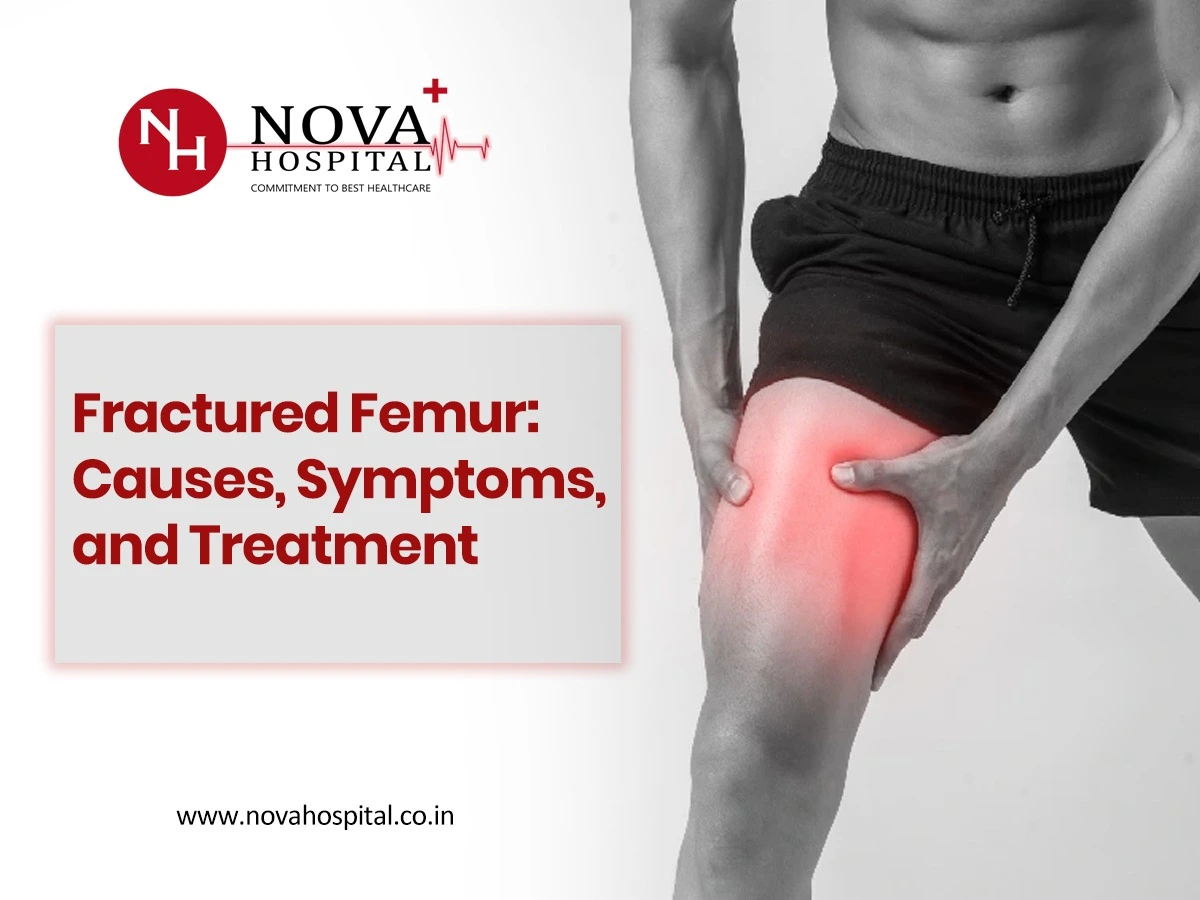Fractured Femur: Causes, Symptoms, and Treatment
The femur is the longest bone in our body and a fractured femur needs attention due to its negative impact on movement and overall skeletal health. Here we will tell you the causes, symptoms, and treatments related to fractured femur.
What Are The Causes of Fractured Femur?
Various femur fractures are classified as breakage pattern, location, and severity. Let’s understand each of these femur fracture-
Transverse fracture – When there is a straight horizontal break across the femur.
Comminuted Fracture – The femur breaks into multiple fragments which eventually results in complexity during treatment.
Spiral fracture – when the femur breaks in a spiral or twisted form.
Oblique fracture – it typically occurs when the femur breaks at a particular angle.
What Is An Open Fracture?
Open fracture or compound fracture occurs when a broken bone protrudes through the skin. This also exposes the injured area to the external surroundings. An Open fracture can increase the risk of infection and require immediate attention. It is essential to clean the wound as soon as possible to prevent further complications.
This fracture requires compassionate care to increase the chances of successful healing. Visiting Orthopaedic Hospital in Lucknow is beneficial in such severe fractures. Doctors of orthopaedic hospitals provide the right treatment and medications.
Most fractures require surgery whereas stress fractures (a less serious type of fracture) may heal normally. Femur fractures mostly require immediate surgery to avoid other complications. Within 24 – 48 hours of fracture, it is necessary to consider surgery if it is advised by your doctor.
What Are The Symptoms of A Fractured Femur?
A fractured femur includes various symptoms. Some of these are pain and swelling in the thigh or groin area. Swelling around the injured area is also common during a fractured femur. This pain and swelling can be severe and due to pressure on your legs, it can be unbearable. Another symptom is a deformity in the alignment of your leg and thigh, which may look twisted or shortened which indicates a fractured femur.
A person with a fractured femur may find it impossible to bear his weight on the leg due to a severe fractured femur. The injured area becomes sensitive to touch and skin colour may appear different in that area due to internal bleeding. This also shows the severe damage to blood vessels in your legs.
A fractured femur can also restrict the normal range of motion or movement in the hip area. It also affects limb movement which may require immediate surgery. A fractured femur includes many common symptoms that are intense pain, deformity, and difficulty in bearing weight. It is necessary to consider the Best Hospital in Lucknow to find the cause behind the fracture and get proper recovery treatment.
What Are The Treatments For A Fractured Femur?
The fractured femur requires immediate attention and emergency care which involves the prevention of further damage. The most common treatment advised by orthopaedics for a fractured femur is surgery. For internal fixation of bone plates, rods, and other ways are used for supporting the femur. Under the process of intramedullary nailing a metal rod is used for inserting at the hip which passes through the fractured area and holds broken bone in a place for reconnection and healing.
Surgeries reduce the risk of complications and promote the healing process. In certain cases, external fixation is done by realigning the broken bone. This method provides stability and healing after the fracture. It is necessary to monitor the regular progress through X-rays and other diagnoses.
Physical therapy helps to increase weight-bearing activities which promote flexibility and stability. Healing of the femur typically takes 4 to 5 months and it includes several medications and lifestyle choices that increase the functionality of the femur.
Conclusion
A fractured femur requires immediate and emergency care for successful recovery. While facing symptoms such as pain and swelling in the knee, negatively affected movement through the limb, and more then you should consult an orthopaedic to find the cause and treatment for it. Surgeries are considered in most fractured femur cases because they reduce the risk of complications and initiate the healing process.

